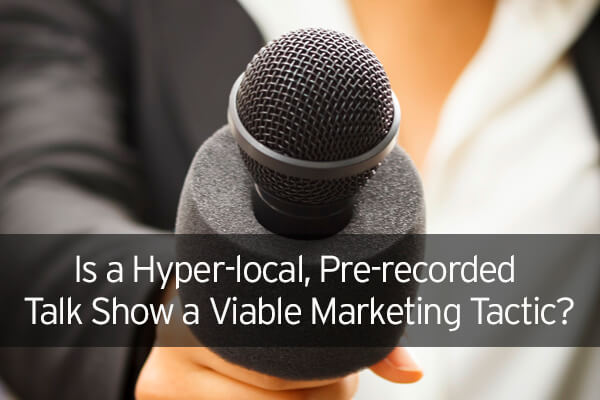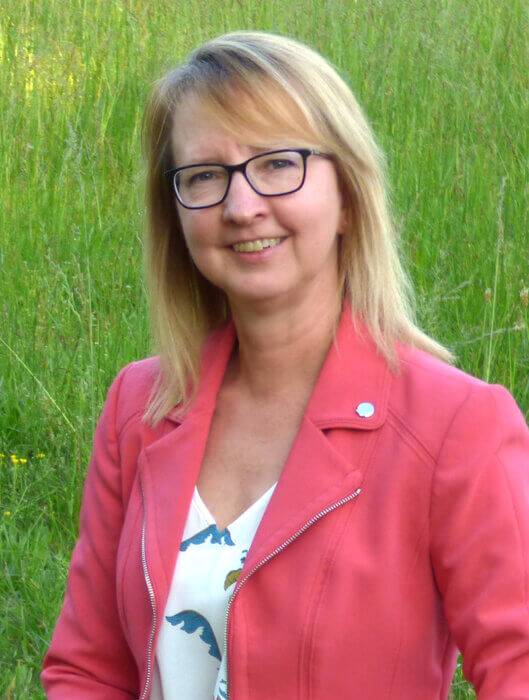Tearsheet.co recently came to Jackie for some analysis of an interesting marketing tactic being used by a community bank in New York. Rhinebeck Bank in Poughkeepsie creates a weekly video formatted in the style of morning TV talk shows. The videos are then distributed on their website, Facebook and YouTube. The content focuses on events in and people from the local community. After reviewing the available sessions on YouTube and Facebook, some interesting questions came up about using a hyper-local pre-recorded talk show to generate awareness and ultimately, sales. (Read Tearsheet.co’s article.)
Why would a community bank choose to use a hyper-local pre-recorded talk show as a marketing device?
In our work with financial industry clients, everyone is looking to differentiate their bank or credit union. Just about all financial institutions provide the same basic products and services, so why should a customer choose your particular bank? What if your bank really cared about the local community? What if your bank wanted to share special stories within that community? Large national banks certainly can’t claim that aspect. Sure, they might have individual branches who ARE really tuned in to the local community, but it’s not an aspect they can claim consistently across their brand. Rhinebeck Bank appears to be staking their claim on having community connections with this talk show format. The title of the show has the geographic area in it. Their guests are local movers and shakers. The hosts are people who live and work in the community. This format is a great way to truly claim the “community” in “community bank.”
But why use a pre-recorded format? Isn’t live-streaming more popular?
Yes, live-streaming on social media certainly is a great way to reach people while showing transparency and authenticity. It is harder however, to tightly control the marketing message. And as the bank states in the article, recording the show allows their compliance group to review the content and add in any necessary disclosures. But based on our compliance and regulatory experience, these shows would likely not need any disclosures as they (in general) do not discuss the bank’s products or services. Recording the show also allows the production value to be tighter, presenting a more polished perception to the audience. But what if they made a concerted effort to go with live-streaming? Avoid any topics which would require a compliance review, for instance. Would the community connection feel more authentic to a younger audience by using live-streaming?
Is the effort worth it? You know, the whole ROI thing.
Ah yes, return on investment. According to the bank, they typically spend about $650-$700 per episode. We’re guessing that could cover the film crew and maybe editing or other post-production costs, but there are so many other resources to consider. Each episode needs research, writing, planning, coordinating guests and other production logistics such as location search.
Let’s say they’re getting really good at these tasks after two seasons and they can complete them in 4 hours. Then another 2 – 4 hours of actual filming. That’s at least one whole day, 20% of a work week, spent on the show. Based on what Jackie has seen in our clients and by actually working IN a financial institution’s marketing group for eight years, using 20% of available time on any one marketing tactic is a big gamble.
Most consumers need to see your branding and advertising messages through a mix of delivery systems in order to remember them. And with so much focus on the digital space, and one element of the digital space, is this bank spending enough resources on other media such as in-branch, print, out-of-home, broadcast, etc. to reach those audiences?
But let’s remember we are not privy to Rhinebeck Bank’s marketing strategy and plan. We are making quite a few assumptions here, which are completely meant to just generate some discussions, get us all thinking about this tactic in broader terms. We applaud RhineBeck’s marketing team for a brave step into this space and wish them many new customers and accounts!
So is this a tactic you would try for your community bank or credit union? Let us know what you think below or with an email or phone call.
Are there similar, but less resource-intensive ideas? Absolutely! Happy to share some with you – just call 256-714-6596 or send an email.


